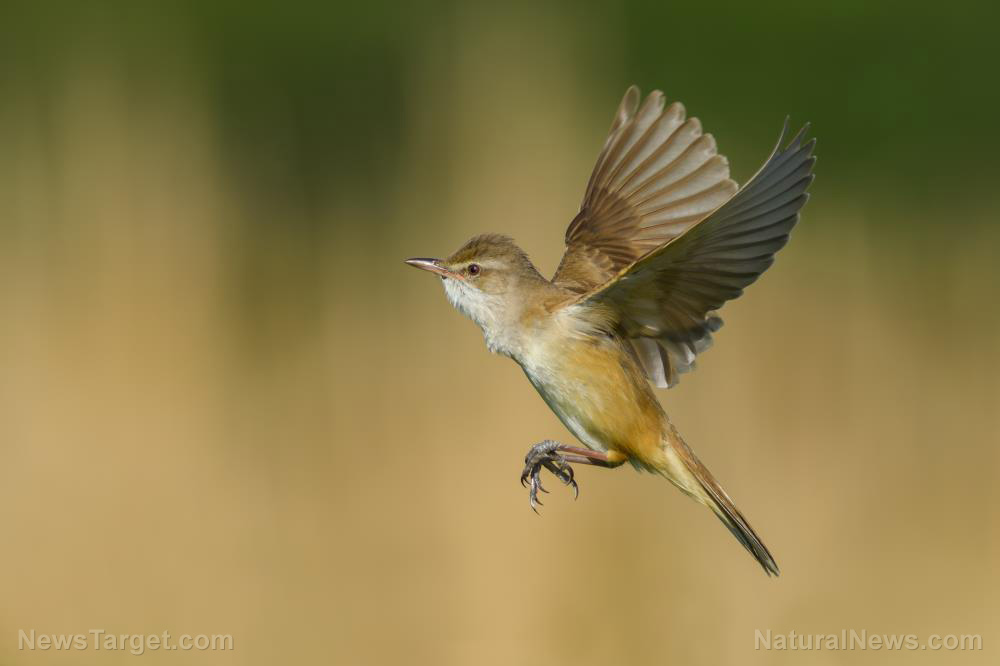Experts: Preserving old villages and farm buildings could help halt the decline of certain bird populations
09/19/2018 / By Edsel Cook

The populations of familiar farmland birds are declining all across the world as modern agricultural methods displace them from their traditional homes. However, a Polish study brings hope for some of these beleaguered birds. If old farm buildings and villages are preserved, stated a news article in the British Ecological Society, then the birds can turn them into new homes.
Adam Mickiewicz University researcher Dr. Zuzanna Rosin said that old-fashioned Polish villages hosted large populations of many different species of farmland birds. This is in contrast to the rest of Europe, where the birds are unable to live in either modern farms or heavily urbanized cities.
Rosin believed that preserving the types of building materials, farms, and homes in traditional villages will attract farmland birds. The animals can recover their depleted numbers at these biodiverse areas.
Once commonly found in agricultural regions around the world, farmland birds are rapidly disappearing from the face of the Earth. The State of Europe’s Common Birds warned that the continent’s population of crested larks during 2005 was a mere five percent of the population during the 1980’s.
Other farmland birds suffered similar declines over the decades. Buntings dwindled by 61 percent while linnets lost more than half their population.
These losses are attributed in no small part to human destruction of bird habitats in order to clear more land for agriculture. (Related: Quebec is restricting use of pesticides that harm fish, bird and bee populations.)
Old Polish villages have more species and populations of farmland birds
Rosin’s study was one of the few that also looked into the roles played by old farms and villages when it comes to preserving biodiversity. Together with their Swedish counterparts, Rosin’s research team surveyed two rural regions in Poland. They evaluated the population levels and species of farmland birds in individual homes, villages, and the surrounding landscape.
During the course of their study, they were able to identify 12,000 individual birds from 135 species. Many of these species are on the decline in Europe.
Furthermore, rural properties that were built before 1989 hosted more birds from a wider range of species than the newer structures. Larger farmsteads also contained more species than homesteads.
In addition, the number of modern homes in a village greatly affects the local bird population. When less than 10 percent of the buildings in a village were new, there would be 20 to 25 different species present.
However, when new construction comprised 40 to 50 percent of the dwellings, the number of bird species in that village never exceeded 10.
When the old farmlands and villages die out, so does wildlife
In this modern day and age, Poland remains largely rural. Half of its people continue to live in rural villages that contain all kinds of buildings and habitats for wildlife.
Around 60 percent of the land is taken up by farmland. Around three out of every four of its 1.5 million farms take up less than 10 hectares of space.
“What strikes you first about these old Polish farms and villages is their diversity: there are many different types of buildings, there are alleys of old deciduous trees, orchards, ponds and paddocks,” explained Rosin. “These all contribute to the multitude of breeding and foraging sites for birds.”
Many parts of old buildings can serve as nesting spots for bird species. The gardens, orchards, shrubs and trees around these structures are also excellent foraging and nesting areas.
However, these rural farms and villages are being forced to change by external factors. When the Berlin Wall fell in 1989, cheap imported food became available in Poland.
As small family farms closed down, young people moved to the cities in search of jobs. The rural villages they left behind went into decline.
More stories about the interaction between animals and humans await at Ecology.news.
Sources include:
Tagged Under: animals, biodiversity, birds, country life, Ecology, environment, Europe, farm buildings, nesting areas, old farmlands, old villages, Poland, rural properties, rural towns, rural villages, species, wildlife, wildlife conservation, wildlife population, wildlife preservation
RECENT NEWS & ARTICLES
COPYRIGHT © 2017 ENVIRON NEWS




















